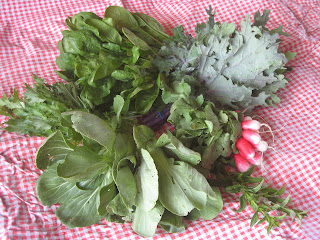Each year we go down to check out the state fair. What I've found is that the more I farm, the more I appreciate the place. I never really cared much for hogs until we raised a few last year, then I was wondering all over the swine barn; I also have a much keener eye for what makes a good-looking ewe or sheep. When you can a lot like we do, you really appreciate the home economics building too. I could go on and on.
 |
| Gopher from State Fair |
I'm making this point about us at the fair not so I can brag about all the things we're into, but because I feel that this local food movement that I'm a part of and you're a part of (you are reading this blog) is moving us to rediscover agriculture and food. I remember being at the fair over ten years ago and thinking "How much longer is this thing going to keep going? Sooner or later it's only going to be a Midway and fried food as all the number of farm families keep dwindling away." I was also getting a bit weary at the time when I only met people who "grew up" on a farm, not people who actually farmed.
These folks were always really proud of their farming heritage and supportive of agriculture, but it really made me worried that farming was just becoming all nostalgia, no reality.
Buy since that time I've met so many who have gone into agriculture in one way or another and people who took the plunge into this whole local food movement and discovered whole foods at the food cooperative or through a CSA like us. Now everywhere I turn I hear people talking about the tomatoes they are going to can this weekend instead of talking about how their grandma used to can. Folks are putting some chicken layers in their backyard instead of just hunting big box stores for the cheapest eggs they can find. I'm really heartened by what I'm observing, and, to my original point, I think this rediscovery of food and agriculture is real. I hope that in some small way your own connection with our farm has brought you some greater appreciation for all those 4-H exhibits as well.
In the Box:
Eggplant
A White Onion
A Couple Cukes
A Couple Summer Squash - Everybody got one Yellow Pattypan Squash (you prepare the same way as zucchini or other summer squash) and a Green Zucchini.
Bunch of Carrots
A Couple Daikon Radishes - The big long white things. You can prepare the same way you prepare a regular red radish, but this is great as an Asian slaw grated with sugar, soy sauce, and a little rice vinegar.
Roma Tomatoes - Romas are best as a sauce
A Couple Heirloom Tomatoes - most are a variety called "Cherokee Purple." These are best eaten fresh, not cooked.
Lacinato Kale
Yukon Gold Potatoes
A Couple Italia Peppers - Yes, they are long and shaped like the Anaheim peppers last week, but these are a sweet pepper with great flavor.
Fresh Sage
A sprig of Red Basil
Melon - Again, a mix of melons in the boxes. Most will find traditional canteloupe, but some will find these little Chanterais melons (small with a greenish color). These are my favorite melons ever with a real distinct flavor.
This looks like a simple grilled eggplant recipe which uses fresh sage:
http://www.epicurean.com/featured/eggplant-grilled-with-sage-recipe.html
Maree also made this recipe using eggplant last week and we were both big fans:
http://www.thenaptimechef.com/2012/03/baked-eggplant-goat-cheese-stacks-with-the-beekman-boys-naptime-everyday/

















